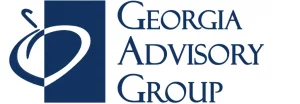6 Retirement Costs to Keep in Mind

No matter how much you’ve thought about retirement already, it can be easy to overlook some of the details that will make your post-employment years run smoothly. You probably have the basics covered, but be sure your plans and projections factor in everything you need for a streamlined, enjoyable transition. Want to make sure you’re on track? Here are a few specifics to keep in mind. Home and living expenses — Of course, housing, food and utility bills are all regular expenses you can expect to continue paying during retirement. Take the time to come up with accurate projections for each of these (and don’t forget to factor in inflation). Taxes — Taxes will still be a significant expense in retirement. Consider income taxes, property taxes and any taxes related to your investments. Health care — Health care is one of the biggest expenses to expect in retirement. Medicare premiums and out-of-pocket payments are important budget line items. Long-term care — As we grow older, long-term care might become necessary. Purchasing long-term care insurance can help with the costs, but it’s wise to prepare for out-of-pocket care costs as well. Emergencies — Does your budget have room for surprise expenses? An emergency fund can help you manage costs associated with unexpected events, like a major home repair, without seriously impacting your investments or your long-term financial goals. The fun stuff — Your retirement years are all about enjoying what makes you the happiest: travel, hobbies, family and friends. Setting aside money for vacations, your favorite activities and spoiling your loved ones can be the fun part of budgeting. Would you like to connect? Reach out with your questions today.
5 Ways to Help Manage Multiple Goals

Retirement is a huge goal, but it probably isn’t your only financial objective. Other significant milestones in your future might be buying a second home, taking your dream trip or helping your kids or grandkids with college. How do you manage – and make progress toward – multiple goals? Do you have questions or want to check in? Reach out today.
Ideas for Creating a Family Giving Plan

Do you and your family want to make a positive impact in the world? Your family can create a plan for charitable giving to help fund nonprofits that support causes you care about. Philanthropy can also bring families together and serve as a beneficial tax strategy. So how do you build an effective giving plan? Here are a few ways to get started. 1. Identify causes that matter to the family. The world is full of worthy causes. Focusing on shared goals around what matters most to your family will make more of an impact than smaller, scattered donations. 2. Determine where to give. Once you know what matters most, you and your family will need to decide how to give. Do you want to focus on small, local charities, or do you want to give to larger, international organizations? 3. Consider your tax goals. Writing a check can be the go-to giving strategy, but it isn’t the only way. You can maximize the tax benefits of charitable giving through different methods. For example, your family can gift appreciated securities to save on capital gains taxes. You can also leverage a donor-advised fund program to take advantage of immediate tax deductions. Families also have the option to create a private foundation to manage charitable donations, which could lead to more tax savings. 4. Work as a team. Family giving is a team effort. Identify different roles for different people and regularly communicate about the mission of the giving plan. Even younger members of the family can get involved to learn about financial literacy. Charitable giving can become an integral part of a family’s financial planning. Reach out if you have questions about making the most of your donations while realizing tax efficiencies.
5 Online Security Best Practices to Know

We bank, shop, schedule doctor’s appointments, and share photos and life updates online. With the constant threat of cybercrime and online fraud, how can you keep your sensitive information safe and protect your online privacy? You probably already have the basics covered, but it’s never a bad idea to review the best ways to protect your financial information, online assets and more. 1. Manage your passwords. Simple passwords might be convenient, but they’re also security risks. Investigate your options and choose a secure password manager to set a solid foundation for online security. 2. Embrace two-factor authentication. Two-factor authentication may involve an extra step, but that second layer of security helps ensure it’s you accessing your account and not someone looking to compromise your data or commit a fraudulent act. 3. Make regular system updates. System updates often come with the latest security software designed to protect your device from known vulnerabilities. Regularly check your phone, tablet and computer for updates or turn on automatic system updates. 4. Recognize red flags. Educate yourself on common online scams so you can avoid clicking on the wrong link. Knowing the common red flags for phishing scams or malware can help you avoid some security pitfalls. 5. Set up security alerts. Set up security alerts to help you catch any suspicious behavior early. For example, many banks allow you to sign up for email and text alerts. You can also establish credit monitoring alerts. While there are many ways to protect yourself from malicious activity online, it’s always possible that your data could be compromised. If you recognize any suspicious activity, report it to the relevant authority, such as your bank or the Social Security Administration, update your passwords and review your online security protocols. Do you have questions or need to check in? Reach out today.
Saving for Retirement With a 401(k) and IRA

Some people focus on saving for retirement with an employer-sponsored 401(k), while others use an IRA — but did you know that you can have both? Funding a 401(k) and IRA can help boost your retirement savings, but it’s not a one-size-fits-all strategy. Here are the basic requirements, contribution limits and tax considerations you need to know: Eligibility Requirements Your eligibility for a 401(k) depends on what plan your employer offers. If you or your spouse have a 401(k), you can still contribute an additional portion of earned income to an IRA. IRAs have no age restrictions and only require the contributor to earn taxable income. Income and Contribution Limits In 2022, individual tax filers cannot make more than $144,000 in modified adjusted gross income (MAGI) if they want to contribute to a Roth IRA, or $214,000 for married couples filing jointly. Traditional IRAs have no income limit. You can contribute a maximum of $20,500 to your 401(k) if you are under 50 years old, and $27,000 if you are 50 years or older this year. The IRA contribution limit in 2022 is $6,000 for those under 50 years old, or $7,000 if you are 50 or older. Tax Considerations Any 401(k) or IRA savings withdrawn before the age of 59 ½ are subject to a penalty. Contributing over the annual limit also results in additional taxes for both 401(k)s and IRAs. Reviewing your MAGI and your existing retirement plan is important when calculating the potential tax benefits of contributing to a 401(k) and IRA and choosing traditional versus Roth plans. Navigating the benefits and implications of a combined 401(k) and IRA retirement strategy can seem tricky. Get in touch today to discuss your retirement savings.
5 Things to Know About Social Security

During your working years, your income determines how much you can expect to receive in Social Security benefits when you become eligible. What should high earners know about their benefits?
Deciding on Joint or Separate Finances

To merge or not to merge? Whether moving in together, getting married or living as civil partners, long-term couples eventually face this important financial decision. Use these tips to help you and your partner find what works best for you. 1. Discuss the pros and cons. Some people see combined accounts as convenient, while others can’t help but feel a loss of financial independence. Both are valid and the impact of each factor varies from person to person, so talk with your partner about what you both consider as benefits and drawbacks. 2. Compare long-term goals. Transparency is essential during financial discussions with your partner. Are you both on the same page about saving for buying a home and planning for retirement? How will keeping your finances separate or merging them affect your goals as a couple? 3. Consider a compromise. Two people in a relationship can have different financial priorities and goals. If you find yourself in this situation, consider a compromise. Some couples only partially combine their finances and opt to keep specific accounts separate. Other couples list their partner as a beneficiary on their assets rather than fully merging them. 4. Be open to change. Planning your financial future is a smart move, but life can change unexpectedly. It’s important to maintain an open dialogue about finances throughout the course of your relationship and revisit the conversation from time to time. A new baby or a new job might mean it is time to reevaluate how you both approach financial planning. Navigating joint or separate finances can be complicated. If you and your partner want professional guidance, let’s discuss how we can help you build the road to long-term financial success together.
4 Trends in the 2022 ETF Market

Exchange-traded funds (ETFs) give investors exposure to a broad array of securities. They help you to diversify your portfolio, and you can easily buy and sell them through brokerage firms. While ETFs can have some of the same benefits as mutual funds, they typically cost less. ETFs had record growth in 2021, and interest in these investment funds remains high. What are some of the major ETF themes for investors to watch this year? 1. Mitigating Inflation: The economy is in a period of surging inflation, which inevitably affects the investment landscape. Certain asset classes like gold and commodities are considered safe bets for hedging against inflation, and ETFs can provide access to these assets more easily. 2. Bitcoin ETFs: Investors can choose from a wide variety of ETFs, such as equity ETFs, commodity ETFs and currency ETFs. Last year, cryptocurrency ETFs came onto the scene, and more will likely launch in 2022. 3. EGS ETFs: Sustainable investment is driving growth in environmental, social and corporate governance (ESG) ETFs. The increasing popularity of EGS ETFs is expected to continue generating interest and value. 4. ETFs in 401(k)s: Mutual funds have long been among the most popular investment options for 401(k)s, but an increasing number of mutual funds are converting to ETFs. This trend could lead to wider availability of ETFs in the 401(k) space. If you are interested in leveraging ETFs as part of your investment strategy, reach out today and get your questions answered.
Keep Your Savings Ahead of Inflation

Rising inflation has caused many people to take a closer look at their finances, but have you considered what it’s doing to your savings and emergency funds? A saved amount of $20,000 in 2020 would need to be $22,217.19 today in order to maintain the same value. Even high yield accounts struggle to keep up, but this depreciation is hard to notice as it’s happening. Luckily, keeping up with inflation doesn’t have to be difficult. These three habits can help you easily stay one step ahead with your savings: Track your spending. Monitoring daily expenses isn’t just for those on a budget — these small transactions accumulate quickly and can be difficult to remember accurately. A visual breakdown helps many people easily spot areas to save more, often without making major changes in habits, and those areas can help fight inflation for you. A simple spreadsheet or free tracking app can help you identify these hidden areas to boost your savings. Cut back on subscriptions. How many subscription services do you have? It’s easy to get suckered into them thinking you’re getting a good deal, and many companies are hoping you forget to unsubscribe once you no longer use them. Money saved from a few canceled monthly subscriptions can easily result in hundreds or more toward your savings each year and help counteract depreciation. Automate your savings. Automatically setting aside additional funds each month is an effortless way to keep your savings ahead of inflation. If you already use automatic transfers, it may be helpful to calculate any value your funds may have lost over the past few years and reconsider your transfer amounts. Saving is an essential piece of your long-term financial strategy. If you want help planning for your future, let’s get in touch.
Don’t Fall for These 5 Finance Faux Pas

Money management can get complicated as your financial success and stability climbs. Sometimes bad habits that impact our long-term financial health start at our high points — and go unnoticed because of it. Have you ever fallen for these financial mistakes? It happens to the best of us. Thankfully, they can be easy to avoid: 1. Following Investment Trends Investing can be a great habit, but it can quickly become a gamble if you don’t do proper research and determine your risk aversion. Market predictions can contain biases, so it’s a plus to develop an investment strategy that suits your personality and perspective to balance their input. 2. Procrastinating Retirement Planning It is never too early to start saving for retirement. There are many different ways to do so if a traditional 401(k) doesn’t suit your current situation (e.g., IRAs, dividends), and starting sooner is always better at any amount. 3. Missing a Rainy Day Fund The unexpected can happen — natural disasters or economic factors beyond your control can throw off even the smartest financial planning strategies. Having an emergency fund worth a few months of income is a great way to prepare for the unexpected and add flexibility to your finances. 4. Lending Money Generosity is an admirable quality, but lending money too optimistically can strain your finances (and personal relationships). No matter who or what it’s for, always consider personal loans as money you don’t expect back when determining risk. 5. Forgetting to Budget Many people associate budgeting with financial strain, but the more money you have to manage, the more important keeping track becomes. Otherwise, shifts in spending and expenses can easily go unnoticed until their impact is too large to ignore. Planning can help you dodge these financial pitfalls and more. Reach out today for professional support toward your strong financial future.
